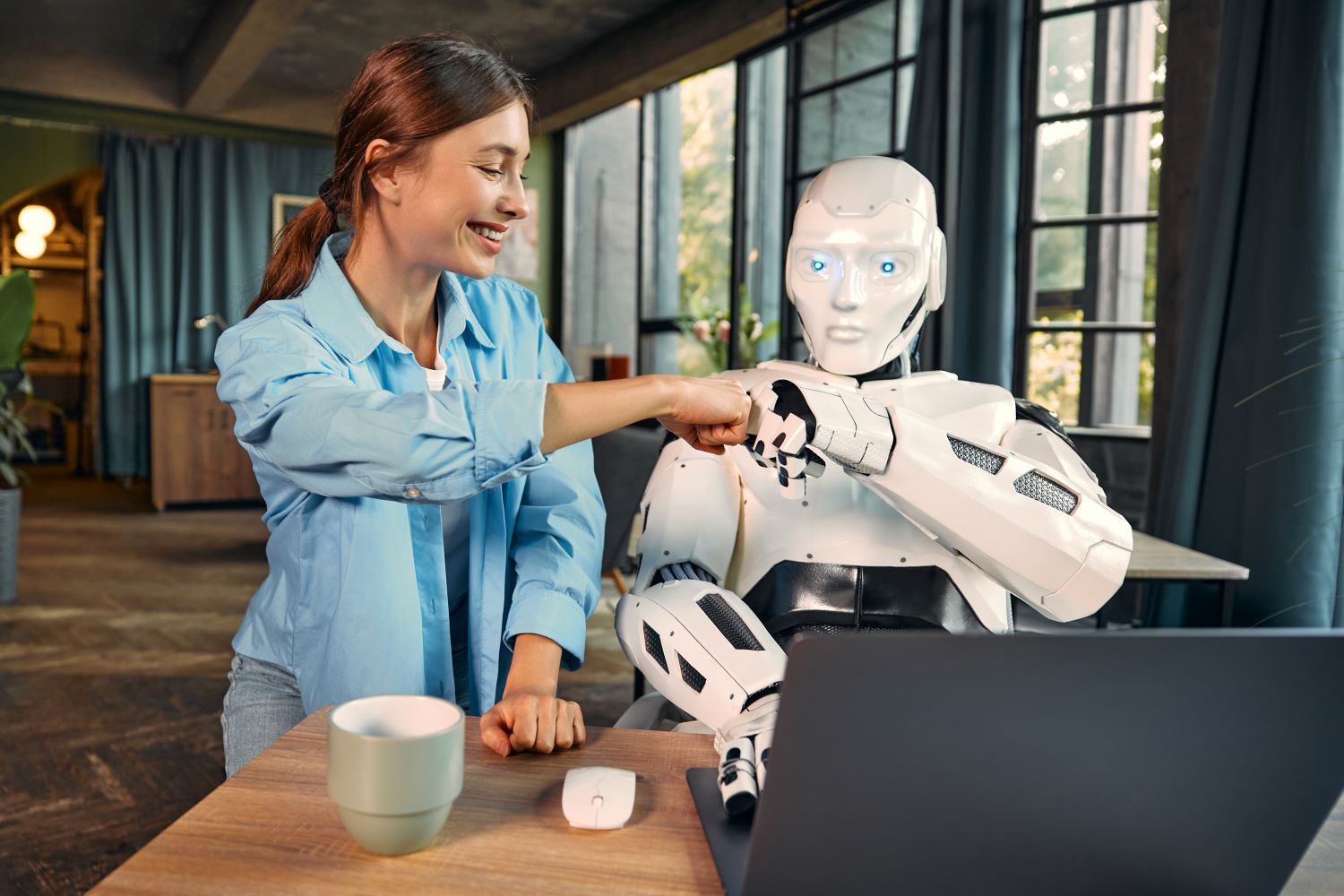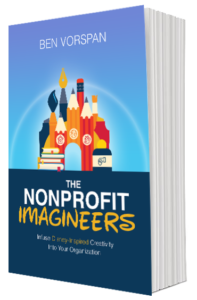
In recent years, artificial intelligence (AI) has made significant inroads into the nonprofit sector, revolutionizing the way organizations operate and engage with their communities. While AI is often associated with tech giants and corporations, it is also becoming an invaluable tool for nonprofits looking to maximize their impact with limited resources. From streamlining marketing communications (marcomm) to enhancing event planning and improving membership engagement, AI is helping nonprofits become more creative, efficient, and effective.
AI in Action: Real-World Examples from the Nonprofit Sector
Nonprofits are increasingly adopting AI tools to handle tasks that once required significant staff time, allowing teams to focus on more strategic, mission-driven work. Here are a few ways nonprofits are using AI to innovate and increase their capacity:
1. Automating Routine Tasks to Save Time
One of the biggest advantages of AI is its ability to take over routine, repetitive tasks that can consume a significant amount of staff time. Nonprofits are leveraging AI to automate processes like scheduling, data entry, and even basic communication, allowing teams to focus on more complex and creative tasks.
Example:
Feeding America, one of the largest hunger-relief organizations in the U.S., uses AI to optimize its food distribution network. By analyzing data on food availability, demand, and transportation routes, AI helps the organization distribute food more efficiently, reducing waste and ensuring that more people receive assistance. What used to take days of manual planning can now be done in a fraction of the time, freeing up staff to focus on fundraising, advocacy, and community engagement.
2. Enhancing Marketing and Communications
Effective marketing and communications are essential for nonprofits to raise awareness, recruit volunteers, and secure donations. AI tools can help nonprofits analyze audience data, create personalized content, and even draft communication materials, making it easier to engage supporters across different platforms.
Example:
The Trevor Project, which provides crisis intervention and suicide prevention services to LGBTQ youth, uses AI in its communications strategy. Through AI-powered chatbots, the organization can offer immediate support to individuals seeking help, reducing wait times and ensuring that users receive timely responses. These AI tools also help analyze trends and patterns in conversations, allowing The Trevor Project to identify emerging issues and adjust its outreach accordingly.
- Dive Deeper – 5 Ways Nonprofit Marketing and Communications Professionals Can Use AI to Boost Efficiency and Creativit
3. Planning More Engaging and Efficient Events
Event planning is a cornerstone of nonprofit fundraising and community building, but it can be time-intensive. AI can assist by automating many aspects of the planning process, from scheduling and marketing to managing RSVPs and analyzing event feedback.
Example:
Amnesty International uses AI to enhance its event planning efforts. By analyzing data from previous events, AI can predict attendance, suggest optimal times and locations, and personalize event invitations to increase engagement. For example, AI algorithms might analyze data on attendee preferences and suggest including certain speakers or topics that align with supporters’ interests. This helps Amnesty International plan events that are more engaging and well-attended, while also saving time and resources in the process.
- Dive Deeper – 3 Ways AI Can Help Plan More Creative Nonprofit Events
4. Improving Membership Engagement
Building and maintaining strong relationships with members and supporters is vital for nonprofits. AI tools can analyze engagement patterns, predict member needs, and deliver personalized experiences that foster loyalty and connection.
Example:
World Wildlife Fund (WWF) uses AI to enhance membership engagement. The organization employs machine learning to analyze donor behavior and personalize communications. For example, AI can predict which members are more likely to increase their donations based on past behavior and suggest targeted campaigns. It can also recommend content and updates that align with each supporter’s interests, whether it’s about climate change, wildlife conservation, or sustainable practices. This ensures that members feel more connected to the cause, as they receive information that resonates with them.
5. Supporting More Effective Fundraising
Fundraising is an essential function for most nonprofits, and AI is helping organizations identify new opportunities and optimize their campaigns. By analyzing donor data, AI can identify patterns and predict which supporters are most likely to contribute, allowing nonprofits to tailor their fundraising efforts for maximum impact.
Example:
UNICEF uses AI to enhance its fundraising campaigns by analyzing vast amounts of donor data to identify trends and insights. During its campaigns, AI helps UNICEF understand which messaging resonates best with different segments of its audience, leading to more effective outreach. For example, AI might analyze past donations, social media engagement, and email open rates to determine the best times to send fundraising appeals and which messages are likely to generate the highest response rates. This data-driven approach ensures that fundraising efforts are more strategic and efficient.
- Dive Deeper – Improving Donor Retention with AI-Powered Insights
6. Data Analysis for Program Impact
Understanding the impact of programs is crucial for nonprofits, as it allows them to measure success, report to stakeholders, and make data-driven decisions. AI can analyze large sets of data quickly, uncovering patterns that might not be immediately apparent to human analysts.
Example:
Crisis Text Line, a nonprofit that provides free mental health support via text message, uses AI to analyze data from millions of conversations. This helps the organization understand which interventions are most effective and identify trends in mental health issues. By analyzing patterns in real time, AI can also prioritize high-risk cases, ensuring that those in urgent need receive immediate attention. This not only improves the quality of support but also helps Crisis Text Line refine its training and outreach strategies.
The Broader Impact of AI on Nonprofits
The examples above highlight how AI can be used across various nonprofit functions, from marketing to program delivery. But beyond these specific applications, AI is helping nonprofits become more agile, creative, and efficient. By reducing the time spent on administrative tasks, AI allows nonprofit professionals to focus on what matters most: making a difference.
Moreover, AI encourages a culture of innovation. As nonprofits see the benefits of adopting AI tools, they are more likely to experiment with new technologies and approaches. This willingness to innovate can lead to new programs, services, and ways of engaging the community, ultimately enhancing the organization’s impact.
Challenges and Considerations
While AI offers numerous benefits, it’s important for nonprofits to approach its implementation thoughtfully. AI tools require quality data to function effectively, and there may be privacy concerns when dealing with sensitive information, especially in areas like mental health or crisis intervention. Nonprofits should also ensure that their staff receive adequate training to understand how to use AI tools effectively.
Finally, the cost of some AI solutions may be a barrier for smaller nonprofits. However, there are many affordable and even free AI tools available that can help organizations get started. By carefully selecting the right tools and integrating them gradually, nonprofits can begin to see the benefits without overextending their resources.
The Future of AI in the Nonprofit Sector
AI is still a relatively new technology in the nonprofit world, but its potential is vast. As AI tools become more accessible and user-friendly, more organizations will be able to integrate them into their operations. The future of AI in the nonprofit sector is not just about automation; it’s about enhancing creativity, improving efficiency, and building stronger, more meaningful connections with members, supporters, and the communities they serve.
By embracing AI, nonprofits can become more nimble and innovative, positioning themselves to tackle the world’s most pressing issues in new and exciting ways. As technology continues to evolve, so too will the ways in which nonprofits can harness AI to drive change and make a lasting impact.
 Celebrate 2 years of Imagineering!
Celebrate 2 years of Imagineering!
Comments are closed